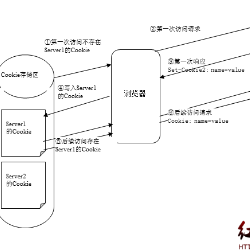Over the past years, advertisement companies have used various tracking methods to persistently track users across the web. Such tracking methods usually include first and third-party cookies, cookie synchronization, as well as a variety of fingerprinting mechanisms. Facebook (FB) recently introduced a new tagging mechanism that attaches a one-time tag as a URL parameter (FBCLID) on outgoing links to other websites. Although such a tag does not seem to have enough information to persistently track users, we demonstrate that despite its ephemeral nature, when combined with FB Pixel, it can aid in persistently monitoring user browsing behavior across i) different websites, ii) different actions on each website, iii) time, i.e., both in the past as well as in the future. We refer to this online monitoring of users as FB web tracking. We find that FB Pixel tracks a wide range of user activities on websites with alarming detail, especially on websites classified as sensitive categories under GDPR. Also, we show how the FBCLID tag can be used to match, and thus de-anonymize, activities of online users performed in the distant past (even before those users had a FB account) tracked by FB Pixel. In fact, by combining this tag with cookies that have rolling expiration dates, FB can also keep track of users' browsing activities in the future as well. Our experimental results suggest that 23% of the 10k most popular websites have adopted this technology, and can contribute to this activity tracking on the web. Furthermore, our longitudinal study shows that this type of user activity tracking can go as far back as 2015. Simply said, if a user creates for the first time a FB account today, FB could, under some conditions, match their anonymously collected past web browsing activity to their newly created FB profile, from as far back as 2015 and continue tracking their activity in the future.
翻译:在过去的几年中,广告公司一直在使用各种跟踪方法,以在网络上持续追踪用户。这种跟踪方法通常包括第一方和第三方Cookie、Cookie同步以及各种指纹识别机制。Facebook(FB)最近推出了一种新的标记机制,它会将一次性标记作为URL参数(FBCLID)附加到到其他网站的传出链接上。尽管这样的标记似乎没有足够的信息来持续追踪用户,但我们证明了,与FB像素结合时,尽管它的短暂性质,它可以帮助在以下方面持久地监控用户的浏览行为,即:i)不同网站之间,ii)每个网站上的不同操作,iii)时间,即过去和未来都可以。我们将这种在线用户监视称为FB网络跟踪。我们发现,尤其是在被GDPR分类为敏感类别的网站上,FB像素以惊人的细节跟踪用户的各种活动。我们还展示了FBCLID标记如何被用于匹配和去匿名化远古时期(甚至在这些用户有FB账户之前)使用FB像素跟踪的在线用户活动。事实上,通过将此标记与具有滚动过期日期的Cookie相结合,FB还可以在未来跟踪用户的浏览活动。我们的实验结果表明,10,000个最受欢迎的网站中有23%采用了这种技术,并可能对网络上的这种活动追踪做出贡献。此外,我们的纵向研究表明,这种类型的用户活动跟踪可以追溯到2015年。简而言之,如果用户今天第一次创建FB账户,则FB根据某些条件,可以将其匿名收集的过去浏览活动与其新创建的FB个人资料匹配,追踪其未来的活动。



